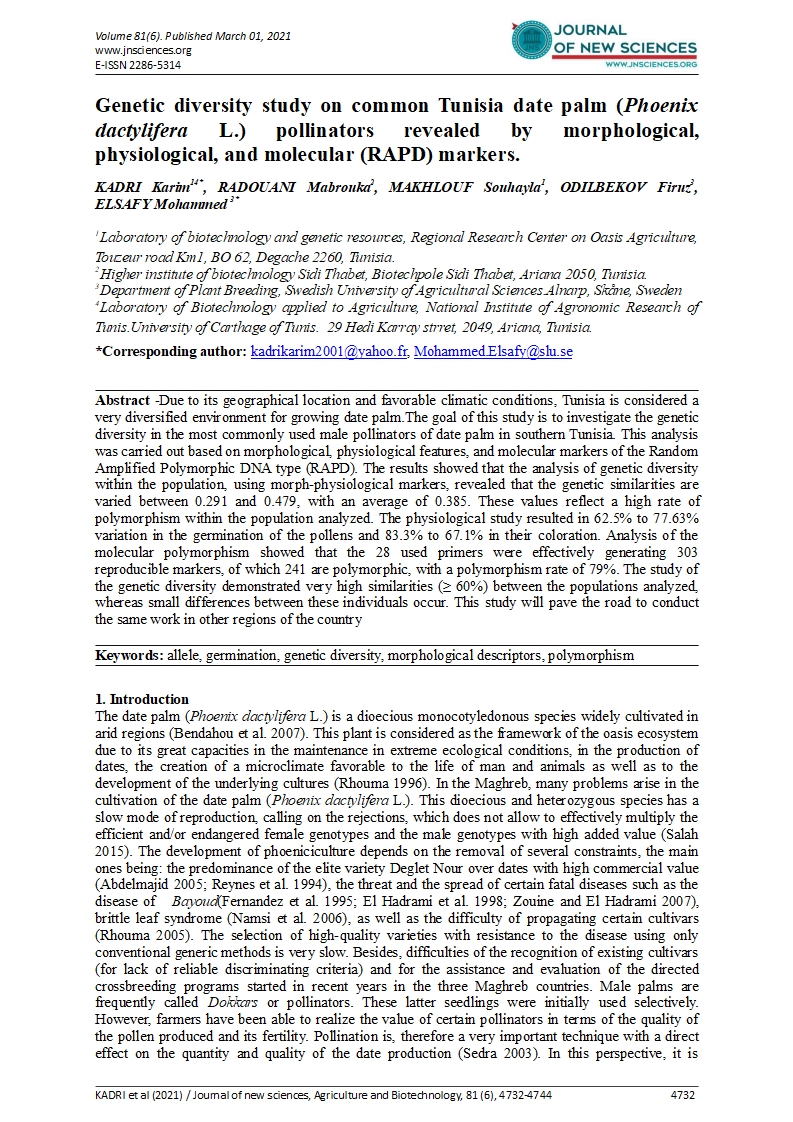

- Category: Volume 81
- Hits: 3342
Genetic diversity study on common Tunisia date palm (Phoenix dactylifera L.) pollinators revealed by morphological, physiological, and molecular (RAPD) markers.
KADRI Karim14
RADOUANI Mabrouka2
MAKHLOUF Souhayla1
ODILBEKOV Firuz3
ELSAFY Mohammed 3*
1Laboratory of biotechnology and genetic resources, Regional Research Center on Oasis Agriculture, Touzeur road Km1, BO 62, Degache 2260, Tunisia.
2Higher institute of biotechnology Sidi Thabet, Biotechpole Sidi Thabet, Ariana 2050, Tunisia.
3Department of Plant Breeding, Swedish University of Agricultural Sciences.Alnarp, Skåne, Sweden
4Laboratory of Biotechnology applied to Agriculture, National Institute of Agronomic Research of Tunis.University of Carthage of Tunis. 29 Hedi Karray strret, 2049, Ariana, Tunisia.
Abstract -Due to its geographical location and favorable climatic conditions, Tunisia is considered a very diversified environment for growing date palm.The goal of this study is to investigate the genetic diversity in the most commonly used male pollinators of date palm in southern Tunisia. This analysis was carried out based on morphological, physiological features, and molecular markers of the Random Amplified Polymorphic DNA type (RAPD). The results showed that the analysis of genetic diversity within the population, using morph-physiological markers, revealed that the genetic similarities are varied between 0.291 and 0.479, with an average of 0.385. These values reflect a high rate of polymorphism within the population analyzed. The physiological study resulted in 62.5% to 77.63% variation in the germination of the pollens and 83.3% to 67.1% in their coloration. Analysis of the molecular polymorphism showed that the 28 used primers were effectively generating 303 reproducible markers, of which 241 are polymorphic, with a polymorphism rate of 79%. The study of the genetic diversity demonstrated very high similarities (≥ 60%) between the populations analyzed, whereas small differences between these individuals occur. This study will pave the road to conduct the same work in other regions of the country.
Keywords: allele, germination, genetic diversity, morphological descriptors, polymorphism

